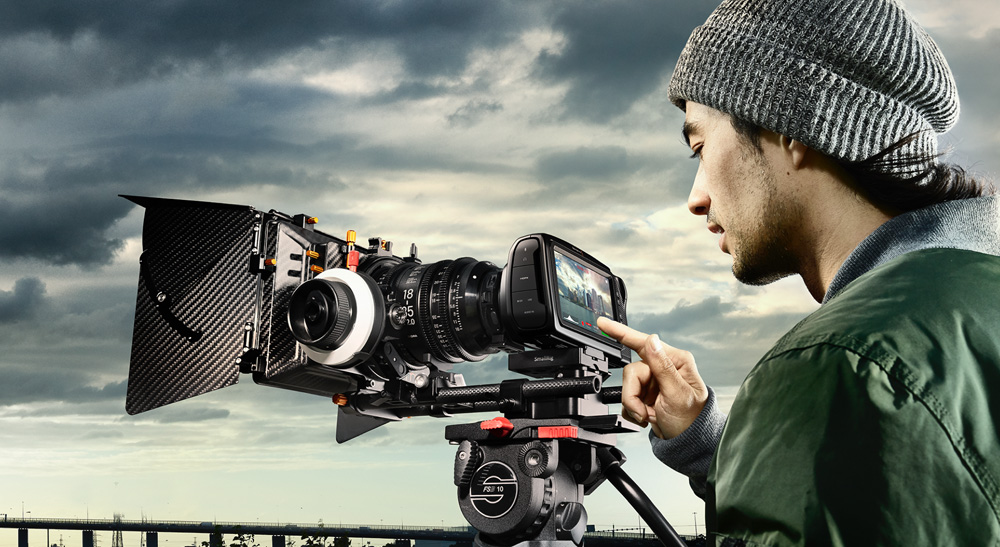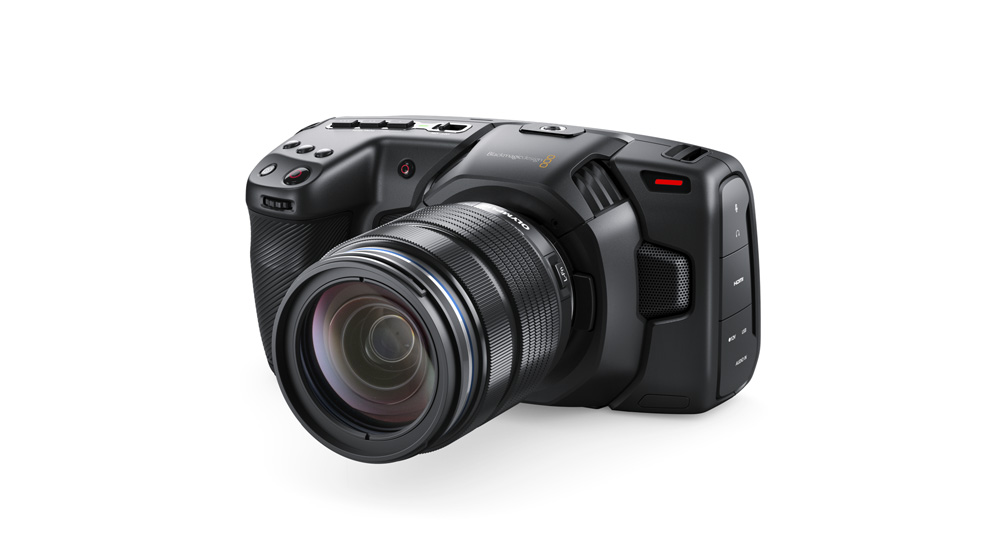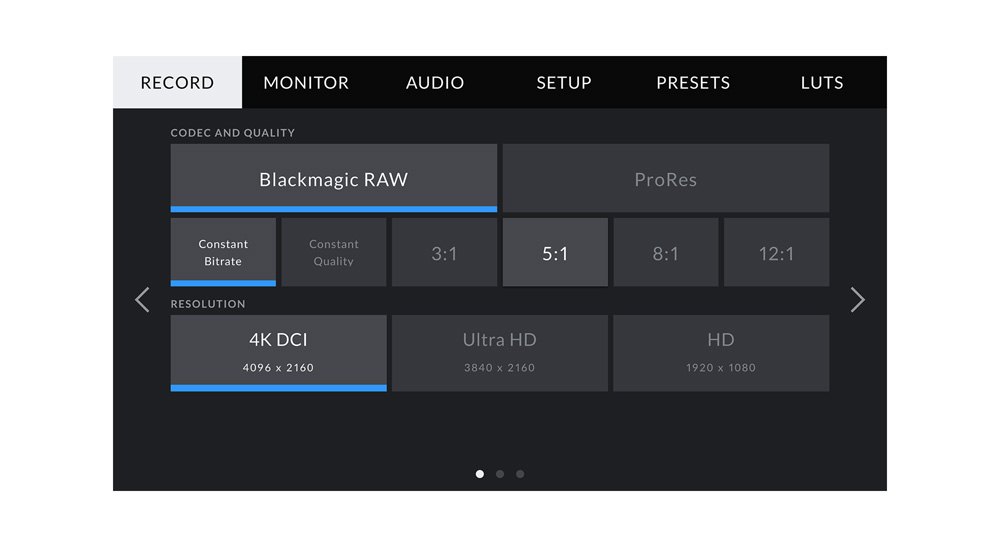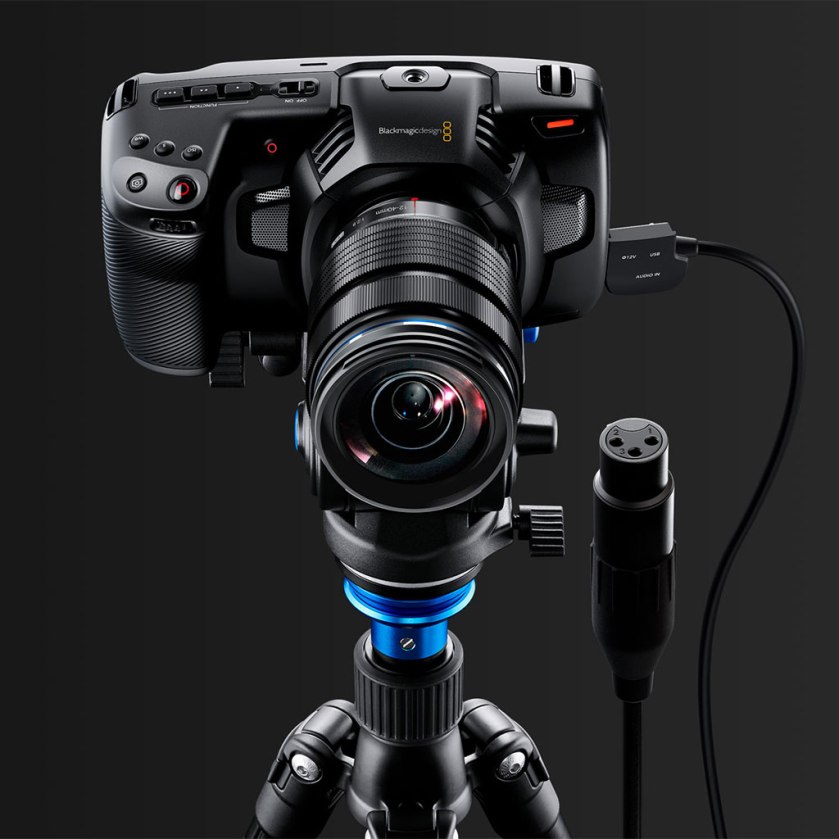Blackmagic Design Adds Blackmagic RAW to Blackmagic Pocket Cinema Camera 4K
New Blackmagic Camera 6.2 update adds Blackmagic RAW to the Blackmagic Pocket Cinema Camera 4K!
Fremont, California, USA – March 5, 2019 – Blackmagic Design today announced Blackmagic Camera 6.2 update which adds support for Blackmagic RAW to the Blackmagic Pocket Cinema Camera 4K.
Blackmagic Camera 6.2 update is available as a free download from the Blackmagic Design website.
Blackmagic RAW, a revolutionary next generation codec that combines the quality and benefits of RAW with the ease of use, speed and file sizes of traditional video formats. Blackmagic RAW is a more intelligent format that gives customers stunning images, incredible performance, cross platform support and a free developer SDK.
With Blackmagic Camera 6.2 update, customers using the Blackmagic Pocket Cinema Camera 4K now have the ability record images using Blackmagic RAW for the first time. This allows them to capture the highest possible quality images in smaller files, giving them much longer recording times with the media they already own. For example, customers can record over 2 hours of full cinematic quality Blackmagic RAW footage in 4K on a single 256GB SD UHS-II card. With Blackmagic RAW 12:1 you can even record 4K DCI images to an SD card, giving you stunning cinematic quality images on incredibly small, inexpensive cards. In addition, Blackmagic RAW gives customers an even faster, more fluid and higher quality editing and color correction workflow in DaVinci Resolve than ever before.
Once the camera has been updated, customers can choose between 3:1, 5:1, 8:1 and 12:1 constant bit-rate recording or between constant quality Q0 and Q5 recording. This lets them prioritize image quality or file size. The constant bit-rate encoding options give customers incredible images at predictable and consistent file sizes. Constant quality Q0 and Q5 use variable bitrate encoding so complex frames are encoded at higher data rates, preserving the maximum amount of detail and quality possible. Blackmagic Design Generation 4 Color Science is used for superior imaging that results in extremely accurate skin tones and gorgeous, lifelike colors. Blackmagic RAW images are encoded using a custom non-linear 12-bit space designed to provide the maximum amount of color data and dynamic range.
In addition, Blackmagic RAW features extensive metadata support, highly optimized GPU and CPU accelerated processing on the desktop and more.
Traditional RAW codecs have large file sizes and are processor intensive, making them hard to work with. Video file formats are faster, but suffer quality problems due to the use of 4:2:2 video filters that reduce color resolution. Blackmagic RAW solves these problems, giving customers the same quality, bit depth, dynamic range and controls as RAW, but with much better performance and smaller file sizes than most popular video codecs. Once files are brought into DaVinci Resolve, additional GPU and CPU acceleration make decoding of frames incredibly fast, so customers get extremely smooth performance for editing and grading.



When the Blackmagic RAW settings are changed in DaVinci Resolve, a .sidecar file can be generated or updated if one already exists. When opened in other software applications that support Blackmagic RAW, the .sidecar file, which contains the Blackmagic RAW settings made in DaVinci Resolve, will be automatically used to display the image. If the .sidecar file is removed then the file will be displayed using the embedded metadata instead. This innovative new workflow gives customers a non-destructive way to change Blackmagic RAW settings while working between different applications.
Blackmagic RAW is much more than a simple RAW container format. Its intelligent design actually understands the camera and the sensor. This means the image data, along with the unique characteristics of the image sensor, are encoded and saved into the Blackmagic RAW file, giving customers much better image quality, even at higher compression settings, as well as total control over features such as ISO, white balance, exposure, contrast, saturation and more.
In addition, Blackmagic RAW uses Blackmagic Design Generation 4 Color Science for superior imaging that results in reproducing extremely accurate skin tones and gorgeous, lifelike colors that rival those of cameras costing tens of thousands of dollars more. Images are encoded using a custom non-linear 12-bit space designed to provide the maximum amount of color data and dynamic range.
Blackmagic RAW also makes it easy for any software developer to access all this technology. The free developer SDK lets any third party software application add Blackmagic RAW support on Mac, Windows and Linux. The Blackmagic RAW developer SDK automatically handles the embedded sensor profile metadata, along with Blackmagic Design color science, for predictable and accurate image rendering that yields consistent color throughout the entire pipeline.
Blackmagic RAW features two types of file compression. Customers can choose either constant quality or constant bitrate encoding options, depending on the kind of work they are doing. This lets them prioritize image quality or file size. Constant quality uses variable bitrate encoding so complex frames are encoded at higher data rates to preserve detail and maintain the highest possible quality. Blackmagic RAW Q0 has minimum quantization and yields the highest quality, while Blackmagic RAW Q5 uses moderate quantization for more efficient encoding and a smaller file size. Blackmagic RAW 3:1, 5:1, 8:1 and 12:1 use constant bitrate encoding to give customers the best possible images with predictable and consistent file sizes. The ratios are based on the unprocessed file size of a single frame from the camera’s sensor, making it easy to understand the relative amount of compression being used.
The pristine camera native quality of Blackmagic RAW Q0 and 3:1 are perfect for effects heavy feature film and commercial work. Blackmagic RAW Q5 and 5:1 are extremely high quality making them great for episodic television and independent films. Blackmagic RAW 8:1 and 12:1 offer high quality and speed, making it suitable for productions that wouldn’t normally consider shooting RAW. Now, more customers than ever will be able to use high quality Blackmagic RAW images in an incredibly efficient way that was impossible before.
Featuring a fully scalable design and completely modern CPU and GPU acceleration, Blackmagic RAW is optimized for AVX, AVX2 and SSE4.1 enabled processors, multi-threaded, works across multiple CPU cores and is GPU accelerated with support for Apple Metal, CUDA and OpenCL. Frame decoding and image processing is extremely fast, making it super smooth for editing, color correction and visual effects in DaVinci Resolve. Another benefit of media being stored as single files, and not image sequences, is it makes media management easier and file copying much faster.
The free Blackmagic RAW Developer SDK is available on Mac OS, Windows and Linux. This SDK takes care of all the work for developers, so adding support for Blackmagic RAW to third party software applications is easy and fast. Developers get access to GPU and CPU accelerated algorithms for decoding files, along with unique information about the camera’s image sensor so their applications can accurately decode and display the files. The SDK features highly descriptive and flexible metadata options designed to support today’s modern workflows. Metadata is embedded directly in the .braw file or it can be stored in a .sidecar file. Metadata is important because it contains the Blackmagic RAW settings along with information for the slate, iris, focus, focal length, white balance and a lot more. The metadata in .sidecar files can be used on top of the embedded metadata without overwriting it. Blackmagic RAW also supports frame based metadata so customers can access values, such as focus distance, that often change on a frame by frame basis.
“Blackmagic RAW has been incredibly successful since we introduced it last fall on URSA Mini Pro,” said Grant Petty, Blackmagic Design CEO. “The new Blackmagic Camera 6.2 update is exciting because it makes this incredible new technology available to Blackmagic Pocket Cinema Camera 4K customers absolutely free! They get the visually lossless image quality of RAW with the speed of traditional video workflows!”
Availability
Blackmagic Camera 6.2 update is available today as a free download from the Blackmagic Design website http://www.blackmagicdesign.com/support
Press Photography
Product photos of Blackmagic Pocket Cinema Camera 4K, and all other Blackmagic Design products, are available at http://www.blackmagicdesign.com/media/images
About Blackmagic Design
Blackmagic Design creates the world’s highest quality video editing products, digital film cameras, color correctors, video converters, video monitoring, routers, live production switchers, disk recorders, waveform monitors and real time film scanners for the feature film, post production and television broadcast industries. Blackmagic Design’s DeckLink capture cards launched a revolution in quality and affordability in post production, while the company’s Emmy™ award winning DaVinci color correction products have dominated the television and film industry since 1984. Blackmagic Design continues ground breaking innovations including 6G-SDI and 12G-SDI products and stereoscopic 3D and Ultra HD workflows. Founded by world leading post production editors and engineers, Blackmagic Design has offices in the USA, UK, Japan, Singapore and Australia. For more information, please go to http://www.blackmagicdesign.com
Clicking on the links below and purchasing through them or our affiliate accounts at B&H Photo Video, SmallRig or Think Tank Photo helps us continue our work for ‘Untitled’.

































